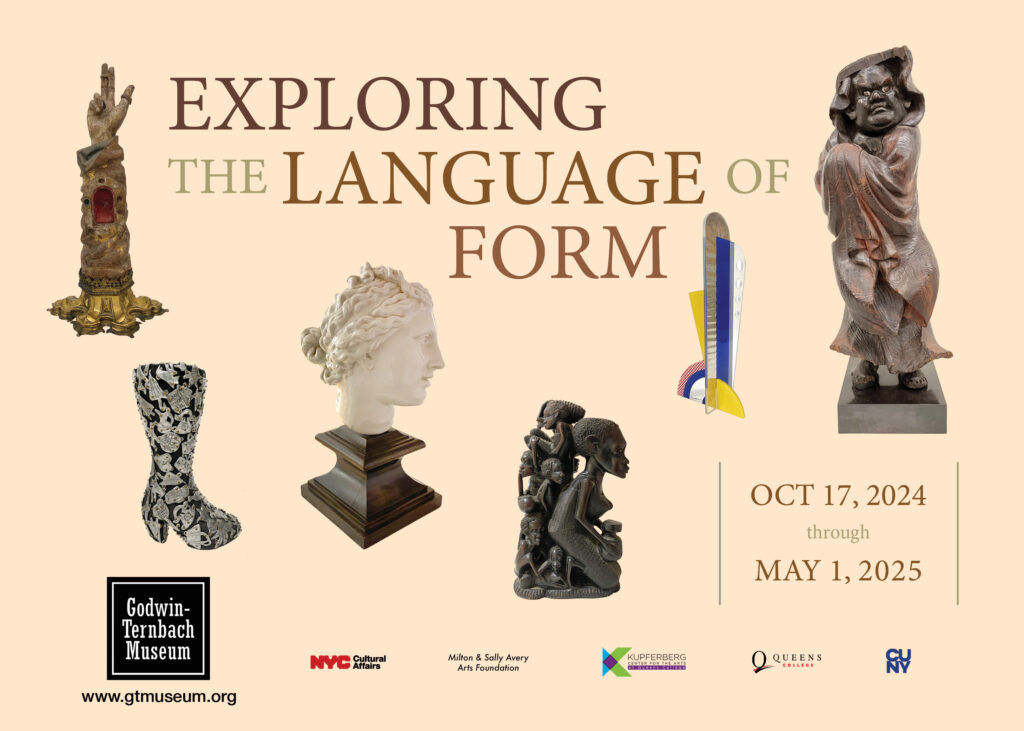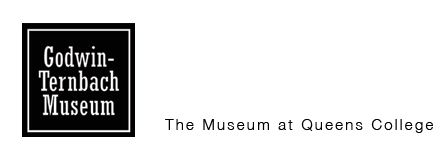
EXPLORING THE LANGUAGE OF FORM
Exploring the Language of Form highlights 100 works of art and artifacts from Godwin-Ternbach Museum (GTM) spanning 5,000 years of global human experience, many revealed for the first time. The exhibition is loosely based on five recurring themes throughout the collection that inspired their selection: Religion and the Spirit; Modern Incantations; Tools for Living; The Real World; and Representing Women. Furthermore, these objects are grouped together, in some instances, in the universal proliferation of vessels, masks, or portraits portraying living beings or incarnations of spiritual deities. Modern and contemporary works by Pat Lasch, Roy Lichtenstein, Marcus Manganni, and Claudia DeMonte, are integrated with other objects by anonymous artisans, folk, and outsider artists. We invite you to wonder at juxtapositions of medium and purpose in pairings of culture and style throughout the exhibition.
In engaging sculptural objects such as Robert Wilson’s towering “Einstein Chair,” to Louise Nevelson’s iconic wall installation, “Triptych,” the issues of scale and materiality challenge viewer’s perceptions of what a three-dimensional expression can be. Marvelous miniature treasures abound in the museum’s collection and are usually safely stored in storage rooms.
We welcome the opportunity to reveal them here. Profound human spiritual beliefs and
practices are exemplified by personal objects such as amulets, shawabti (Egyptian funerary figures), and netsuke. For example, a unique sculpted alabaster “shawabti” identified as that of Pharaoh Amenhotep I, Egypt, Dynasty XVIII, c. 1500 BC is the only representation of this king known in any collection anywhere in the world, according to Dr. Robert Steven Bianchi, formerly of the Metropolitan Museum of Art.
Exploring the Language of Form is a companion piece to our accompanying exhibition in the Lobby Gallery, Wunderkammer II: Animalia, highlighting the vast diversity of GTM’s collection told through objects depicting animals, from the quotidian to the ecclesiastical, realized in a variety of materials. These works express the complex dynamic of human and animal interactions throughout history.
Click Here for exhibition check list.
This exhibition is funded by the Friends of the Godwin-Ternbach Museum, Kupferberg Center for the Arts, and Queens College, CUNY. Education programs and initiatives are supported by the Milton & Sally Avery Arts Foundation, and public funds from the NYC Department of Cultural Affairs in partnership with New York City Council. Additional support for the care of the collection is made possible by the Pine Tree Foundation.
